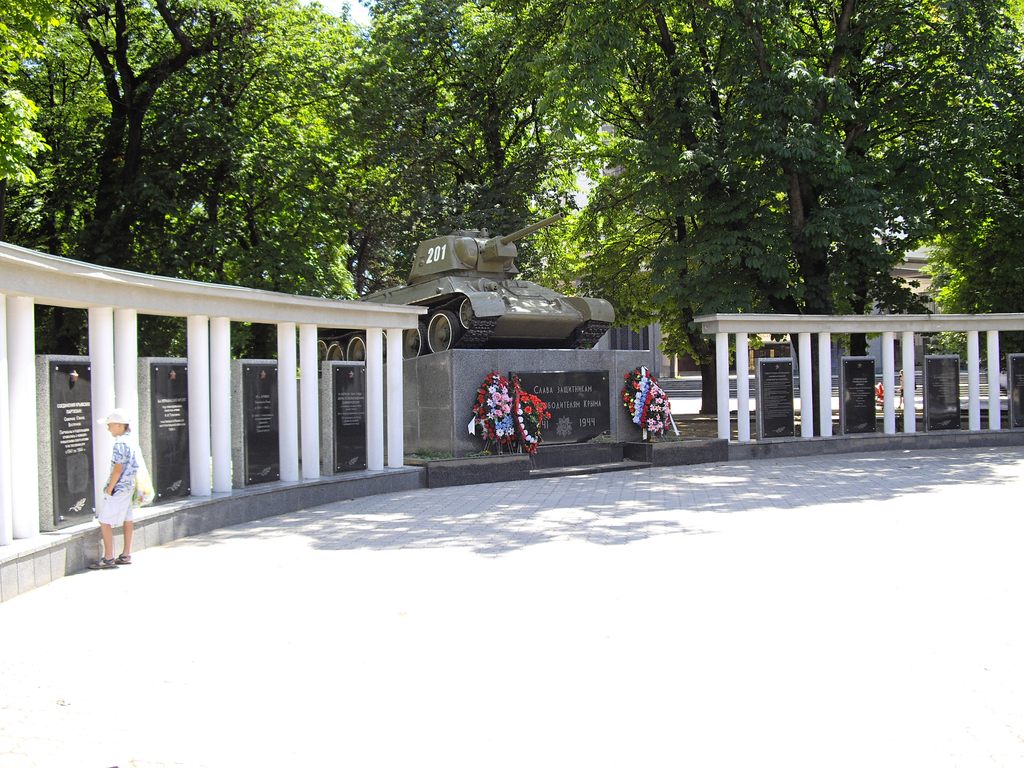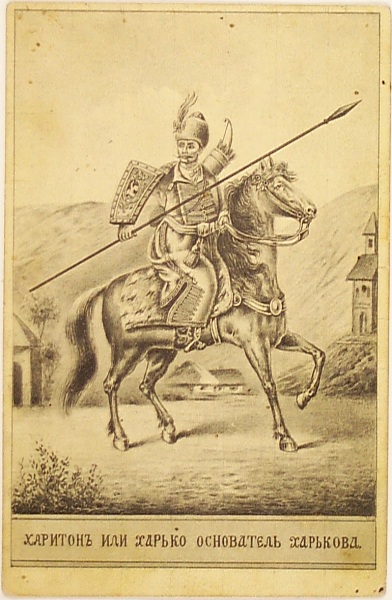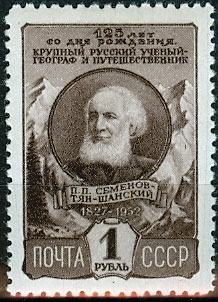|
Georgy Vysotsky
Georgy Nikolaevich (or Mykolayovych) Vysotsky (; ; 7 February 1865 – 6 April 1940) was a Ukrainian and Soviet soil scientist and forester who worked in the steppe, where he examined forest growth and the effects of soil factors. Vysotsky was born in Nikitovka and went to the St. Petersburg Petrovsky Agricultural Academy in 1886, where he came under the influence of Vasily Dokuchaev and Georgy Fedorovich Morozov. He worked from 1890 at the Berdyansk Reserve and in 1892 joined Dokuchaev on an expedition to Poltava and became manager of the Great Anatolian forest reserve. There, he experimented on the use of forest strips to manage droughts. From 1904, he worked on experimental forestry near Samara. From 1913, he worked on reforestation of the steppe near Kiev and from 1918, he began to teach first in Kiev and then in Simferopol, Minsk and Kharkiv Kharkiv, also known as Kharkov, is the second-largest List of cities in Ukraine, city in Ukraine. [...More Info...] [...Related Items...] OR: [Wikipedia] [Google] [Baidu] |
GN Vysotsky 1912
GN may refer to: Businesses and organizations * Air Gabon (IATA code: GN), an airline based in Libreville, Gabon * Gendarmerie Nationale (other), any of several national police forces * Gente Nueva, a Mexican criminal organization * GN Store Nord, a Danish manufacturer * GN (car), a British car company operating from 1910 to 1925 * Great Northern Railway (U.S.), a railway that ran from St. Paul to Seattle * Guardia Nacional (other), a national guard or military in some Latin American nations * Gioventù Nazionale (GN), youth wing of the Italian Brothers of Italy (FdI) party Music * ''G. N.'' (album), a 1981 album by Gianna Nannini * ''GN'' (album), a 2017 album by Ratboys Places * Guinea (ISO country code: GN), a nation in West Africa ** .gn, the Internet top-level domain for Guinea Science and technology * Gauss-Newton, an algorithm in statistics * GeneNetwork, database and analysis software for systems genetics * Giganewton, a unit of force in physi ... [...More Info...] [...Related Items...] OR: [Wikipedia] [Google] [Baidu] |
Ukraine
Ukraine is a country in Eastern Europe. It is the List of European countries by area, second-largest country in Europe after Russia, which Russia–Ukraine border, borders it to the east and northeast. Ukraine also borders Belarus to the north; Poland and Slovakia to the west; Hungary, Romania and Moldova to the southwest; and the Black Sea and the Sea of Azov to the south and southeast. Kyiv is the nation's capital and List of cities in Ukraine, largest city, followed by Kharkiv, Odesa, and Dnipro. Ukraine's official language is Ukrainian language, Ukrainian. Humans have inhabited Ukraine since 32,000 BC. During the Middle Ages, it was the site of early Slavs, early Slavic expansion and later became a key centre of East Slavs, East Slavic culture under the state of Kievan Rus', which emerged in the 9th century. Kievan Rus' became the largest and most powerful realm in Europe in the 10th and 11th centuries, but gradually disintegrated into rival regional powers before being d ... [...More Info...] [...Related Items...] OR: [Wikipedia] [Google] [Baidu] |
Soviet
The Union of Soviet Socialist Republics. (USSR), commonly known as the Soviet Union, was a List of former transcontinental countries#Since 1700, transcontinental country that spanned much of Eurasia from 1922 until Dissolution of the Soviet Union, it dissolved in 1991. During its existence, it was the list of countries and dependencies by area, largest country by area, extending across Time in Russia, eleven time zones and sharing Geography of the Soviet Union#Borders and neighbors, borders with twelve countries, and the List of countries and dependencies by population, third-most populous country. An overall successor to the Russian Empire, it was nominally organized as a federal union of Republics of the Soviet Union, national republics, the largest and most populous of which was the Russian SFSR. In practice, Government of the Soviet Union, its government and Economy of the Soviet Union, economy were Soviet-type economic planning, highly centralized. As a one-party state go ... [...More Info...] [...Related Items...] OR: [Wikipedia] [Google] [Baidu] |
Nikitovka
Nikitovka () is a rural locality (a selo) and the administrative center of Nikitovskoye Rural Settlement, Krasnogvardeysky District, Belgorod Oblast, Russia Russia, or the Russian Federation, is a country spanning Eastern Europe and North Asia. It is the list of countries and dependencies by area, largest country in the world, and extends across Time in Russia, eleven time zones, sharing Borders .... The population was 526 as of 2010. There are 12 streets. Geography Nikitovka is located south of Biryuch (the district's administrative centre) by road. Samarino is the nearest rural locality. References Rural localities in Krasnogvardeysky District, Belgorod Oblast Valuysky Uyezd {{BelgorodOblast-geo-stub ... [...More Info...] [...Related Items...] OR: [Wikipedia] [Google] [Baidu] |
Vasily Dokuchaev
Vasily Vasilyevich Dokuchaev (; 1 March 1846 – 8 November 1903) was a Russian geologist and geographer who is credited with laying the foundations of soil science. The Ukrainian city of Dokuchaievsk is named after him. Overview Vasily Vasilevich Dokuchaev is commonly regarded as the father of soil science, the study of soils in their natural setting. He developed soil science in Russia and was perhaps the first to conduct broad geographical investigations of different soil types. His contribution to science figuratively "put soils on the map". He introduced the idea that other variables could explain the geographical variations in soil type besides geological factors (parent material), such as climatic and topographic factors, and by the duration of pedogenesis (soil formation). He developed the very first soil classification, using these ideas as a starting point. His ideas were taken up by many soil scientists, including Hans Jenny. Dokuchaev's work on soil ... [...More Info...] [...Related Items...] OR: [Wikipedia] [Google] [Baidu] |
Georgy Fedorovich Morozov
Georgy Fedorovich Morozov (; 7 January 1867 – 9 May 1920) was a Russian forester and biologist who introduced the first ecological ideas to classify forest types. He introduced ideas of "the forest as a plant society", which he developed into the definition of the forest as a complex biogeocenotic, geographic and historical phenomenon that was made up of non-living and living components. Life Morozov was born in St. Petersburg, Russia, where his father worked in a linen drapery. He went to the military academy at Pavel Military School, Pavlovsk and graduated in 1886 as a second lieutenant. When posted in Latvia, he met several students including the exiled revolutionary Olga Zandrok. After her period of exile had ended, he left the army, moved back to St. Petersburg with Olga and began to study the agricultural sciences at the Institute of Forestry. Morozov's father disowned him, and he was left to earn his own living by teaching while he studied. He studied botany under Ivan Pa ... [...More Info...] [...Related Items...] OR: [Wikipedia] [Google] [Baidu] |
Poltava
Poltava (, ; , ) is a city located on the Vorskla, Vorskla River in Central Ukraine, Central Ukraine. It serves as the administrative center of Poltava Oblast as well as Poltava Raion within the oblast. It also hosts the administration of Poltava urban hromada, one of the hromadas of Ukraine. Poltava has a population of History It is still unknown when Poltava was founded, although the town was not attested before 1174. However, municipal authorities chose to celebrate the city's 1100th anniversary in 1999. The settlement is indeed an old one, as archeologists unearthed an ancient Paleolithic dwelling, as well as Scythian remains, within the city limits. Middle Ages The present name of the city is traditionally connected to the settlement Ltava, which is mentioned in the ''Hypatian Chronicle'' in 1174. [...More Info...] [...Related Items...] OR: [Wikipedia] [Google] [Baidu] |
Kiev
Kyiv, also Kiev, is the capital and most populous List of cities in Ukraine, city of Ukraine. Located in the north-central part of the country, it straddles both sides of the Dnieper, Dnieper River. As of 1 January 2022, its population was 2,952,301, making Kyiv the List of European cities by population within city limits, seventh-most populous city in Europe. Kyiv is an important industrial, scientific, educational, and cultural center. It is home to many High tech, high-tech industries, higher education institutions, and historical landmarks. The city has an extensive system of Transport in Kyiv, public transport and infrastructure, including the Kyiv Metro. The city's name is said to derive from the name of Kyi, one of its four legendary founders. During History of Kyiv, its history, Kyiv, one of the oldest cities in Eastern Europe, passed through several stages of prominence and obscurity. The city probably existed as a commercial center as early as the 5th century. A Slav ... [...More Info...] [...Related Items...] OR: [Wikipedia] [Google] [Baidu] |
Simferopol
Simferopol ( ), also known as Aqmescit, is the second-largest city on the Crimea, Crimean Peninsula. The city, along with the rest of Crimea, is internationally recognised as part of Ukraine, but controlled by Russia. It is considered the capital of the Autonomous Republic of Crimea. Since 2014 it has been under the ''de facto'' control of Russia, which Annexation of Crimea by the Russian Federation, annexed Crimea that year and regards Simferopol as the capital of the Republic of Crimea (Russia), Republic of Crimea. Simferopol is an important political, economic and transport hub of the peninsula, and serves as the administrative centre of both Simferopol Municipality and the surrounding Simferopol District. Its population was After the 1784 Annexation of Crimea by the Russian Empire, annexation of the Crimean Khanate by the Russian Empire, the Russian empress decreed the foundation of a city named Simferopol on the location of the Crimean Tatars, Crimean Tatar town of Old ... [...More Info...] [...Related Items...] OR: [Wikipedia] [Google] [Baidu] |
Minsk
Minsk (, ; , ) is the capital and largest city of Belarus, located on the Svislach (Berezina), Svislach and the now subterranean Nyamiha, Niamiha rivers. As the capital, Minsk has a special administrative status in Belarus and is the administrative centre of Minsk region and Minsk district. it has a population of about two million, making Minsk the Largest cities in Europe, 11th-most populous city in Europe. Minsk is one of the administrative capitals of the Commonwealth of Independent States (CIS) and the Eurasian Economic Union (EAEU). First mentioned in 1067, Minsk became the capital of the Principality of Minsk, an appanage of the Principality of Polotsk, before being annexed by the Grand Duchy of Lithuania in 1242. It received town privileges in 1499. From 1569, it was the capital of Minsk Voivodeship, an administrative division of the Polish–Lithuanian Commonwealth. It was part of the territories annexed by the Russian Empire in 1793, as a consequence of the Second Part ... [...More Info...] [...Related Items...] OR: [Wikipedia] [Google] [Baidu] |
Kharkiv
Kharkiv, also known as Kharkov, is the second-largest List of cities in Ukraine, city in Ukraine.Kharkiv "never had eastern-western conflicts" , ''Euronews'' (23 October 2014) Located in the northeast of the country, it is the largest city of the historic region of Sloboda Ukraine. Kharkiv is the administrative centre of Kharkiv Oblast and Kharkiv Raion. Prior to the Russian invasion of Ukraine in early 2022, it had an estimated population of 1,421,125. Founded in 1654 as a Cossacks, Cossack fortress, by late 19th century Kharkiv had developed within the Russian Empire as a major commercial and industrial centre. From December 1919 to January 1934, Kharkiv was the capital of the Ukrainian Soviet Socialist Rep ... [...More Info...] [...Related Items...] OR: [Wikipedia] [Google] [Baidu] |
Pyotr Semyonov-Tyan-Shansky
Pyotr Petrovich Semyonov or Semenov (; 2 January ''(New style: 14 January)'', 1827 – 26 February ''(New style: 11 March)'', 1914) was a Russian geographer and statistician who managed the Russian Geographical Society for more than 40 years. He gained international fame for his pioneering exploration of the Tian Shan mountains. He changed his surname to "Semyonov of Tian Shan" (Семёнов-Тян-Шанский, ''Semyonov-Tyan-Shansky'') at the age of 79. Several of his descendants, including a son, Andrey Semyonov-Tyan-Shansky, and a grandson Oleg Semenov-Tian-Shansky became scientists of note. Life Pyotr Semenov was born into a noble family and studied at Saint Petersburg University. Together with Fyodor Dostoyevsky, Semenov attended secret meetings of the "Petrashevsky Circle" (a literary discussion group of progressive-minded commoner-intellectuals in St. Petersburg). During the 1850s he studied geography and geology in Berlin under Alexander Humboldt and Carl R ... [...More Info...] [...Related Items...] OR: [Wikipedia] [Google] [Baidu] |





